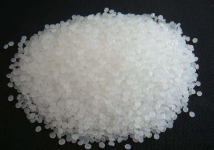read: 827 time:2025-06-27 09:27:16 from:化易天下
Understanding why phenols are more acidic than alcohols is a key concept in organic chemistry. The acidity of a compound depends on the ability of its conjugate base to stabilize the negative charge after deprotonation. Phenols and alcohols both contain a hydroxyl group (-OH), but the environment around this group greatly influences their acidity. In this article, we will explore the factors that make phenols more acidic than alcohols, diving into resonance stabilization, inductive effects, and the nature of the aromatic ring in phenols.
One of the primary reasons why phenols are more acidic than alcohols is the resonance stabilization of the phenoxide ion formed after phenol loses a proton. When phenol (C6H5OH) loses a hydrogen ion (H+), it forms a phenoxide ion (C6H5O−). This phenoxide ion is resonance-stabilized, meaning the negative charge on the oxygen atom is delocalized over the aromatic ring. The delocalization spreads the negative charge across several atoms, reducing the electron density on any one atom and thereby stabilizing the ion.
In contrast, when an alcohol (such as ethanol) loses a proton, the resulting alkoxide ion (CH3CH2O−) lacks this resonance stabilization. The negative charge remains localized on the oxygen atom, making the alkoxide ion much less stable than the phenoxide ion. This lack of stabilization is a key reason why alcohols are less acidic than phenols.
Another factor why phenols are more acidic than alcohols is the inductive effect, particularly in the presence of electron-withdrawing groups on the aromatic ring. In phenols, the presence of groups like nitro (-NO2) or halogens (e.g., -Cl, -Br) attached to the aromatic ring can further increase acidity. These groups pull electron density away from the ring through inductive effects, making the oxygen-hydrogen bond more polar. This increased polarity facilitates the release of the proton (H+), enhancing the acidity of phenols.
In alcohols, the alkyl groups attached to the oxygen are electron-donating by nature. This electron donation reduces the polarity of the O-H bond, making it harder for the molecule to lose a proton. Therefore, alcohols generally do not benefit from the inductive effects in the same way phenols do, resulting in lower acidity.
The aromatic ring in phenols plays a crucial role in determining their acidity. The ring's structure allows for the extensive delocalization of the negative charge in the phenoxide ion, as discussed earlier. Additionally, the sp2 hybridized carbon atoms in the aromatic ring are more electronegative than the sp3 hybridized carbons in aliphatic alcohols. This increased electronegativity further stabilizes the negative charge on the oxygen atom in the phenoxide ion, making phenols more acidic.
Alcohols, lacking an aromatic ring, do not have this additional stabilization mechanism. The carbon atoms attached to the hydroxyl group in alcohols are sp3 hybridized, which does not provide the same level of electronegativity and stabilization. This difference in hybridization further explains why phenols are more acidic than alcohols.
In summary, the increased acidity of phenols compared to alcohols is primarily due to the resonance stabilization of the phenoxide ion, the inductive effects of electron-withdrawing groups, and the nature of the aromatic ring. These factors collectively make phenols more capable of stabilizing the negative charge after deprotonation, resulting in higher acidity. Understanding these differences is crucial for anyone studying organic chemistry or working in fields related to chemical synthesis and analysis.

Jincheng Petrochemical's 300000 ton polypropylene plant successfully trial production, 2024 polypropylene market analysis

The ABS market remains sluggish, what is the future direction?

Market differentiation of bisphenol A intensifies: prices rise in East China, while prices generally decline in other regions

The production method and process flow of silicone acrylic lotion, and what are the common raw materials